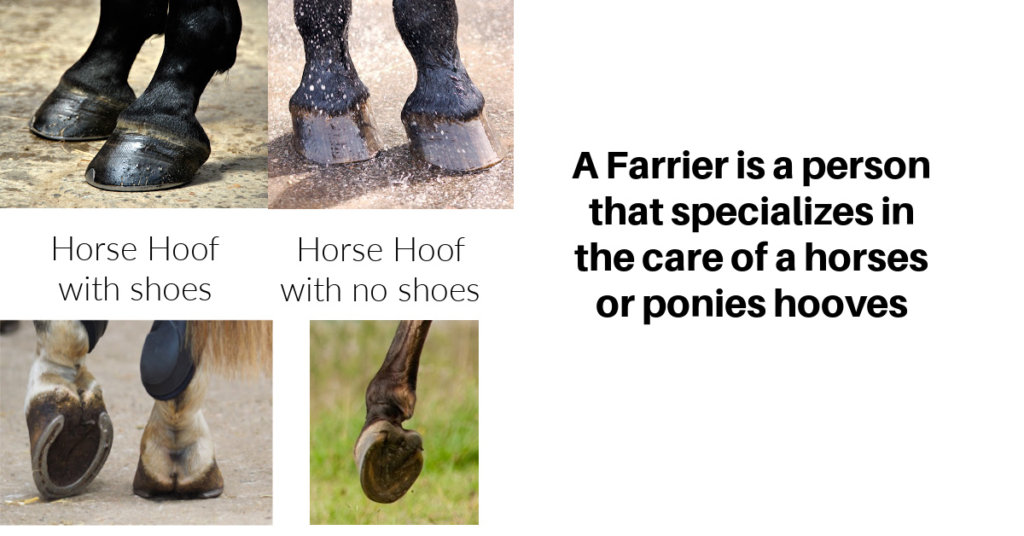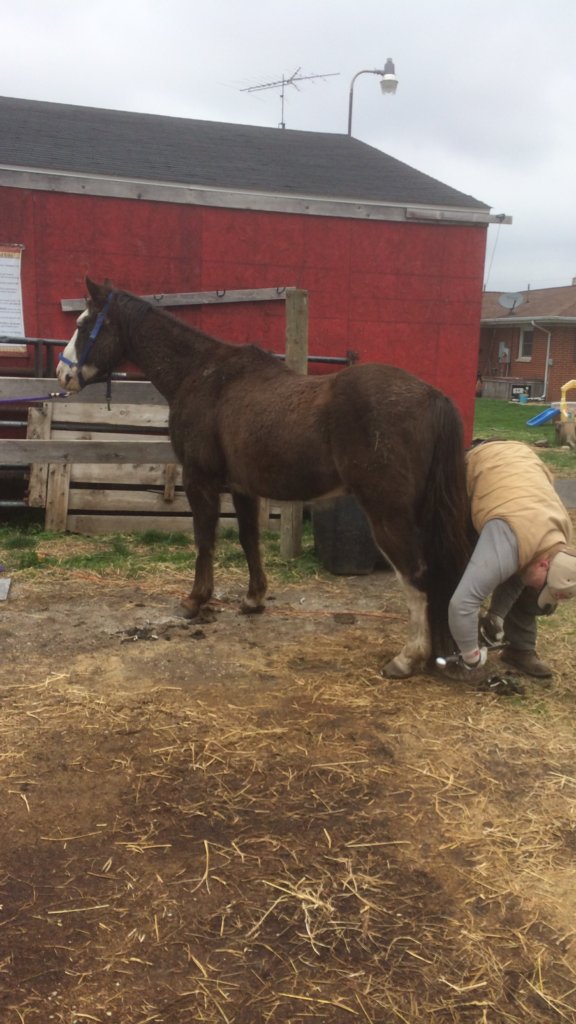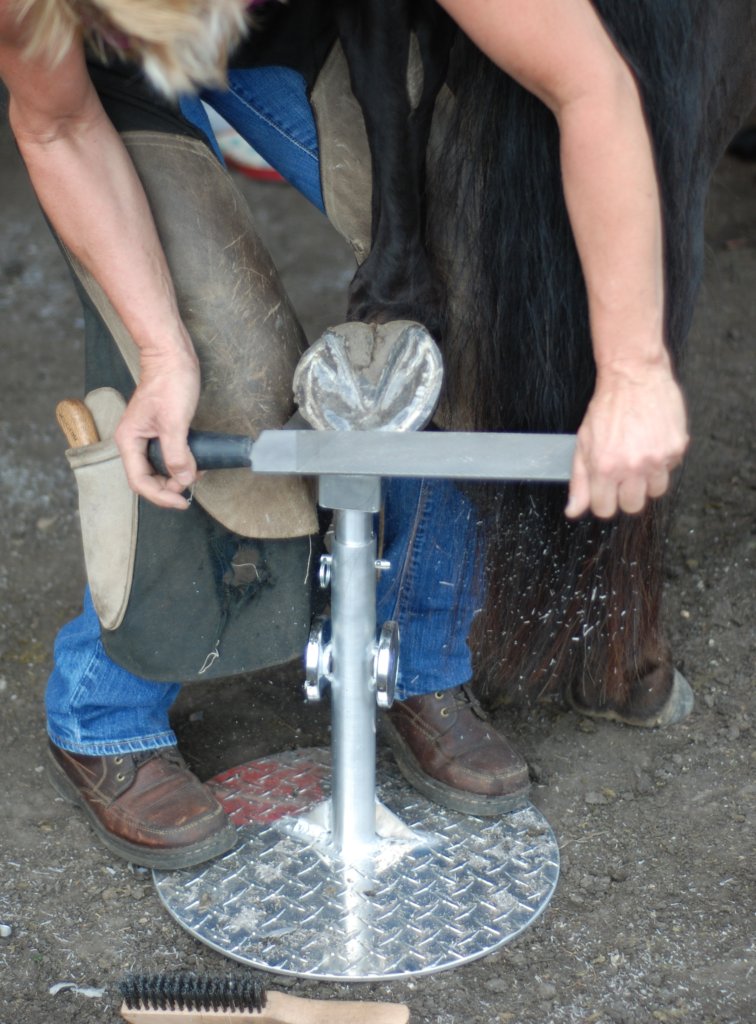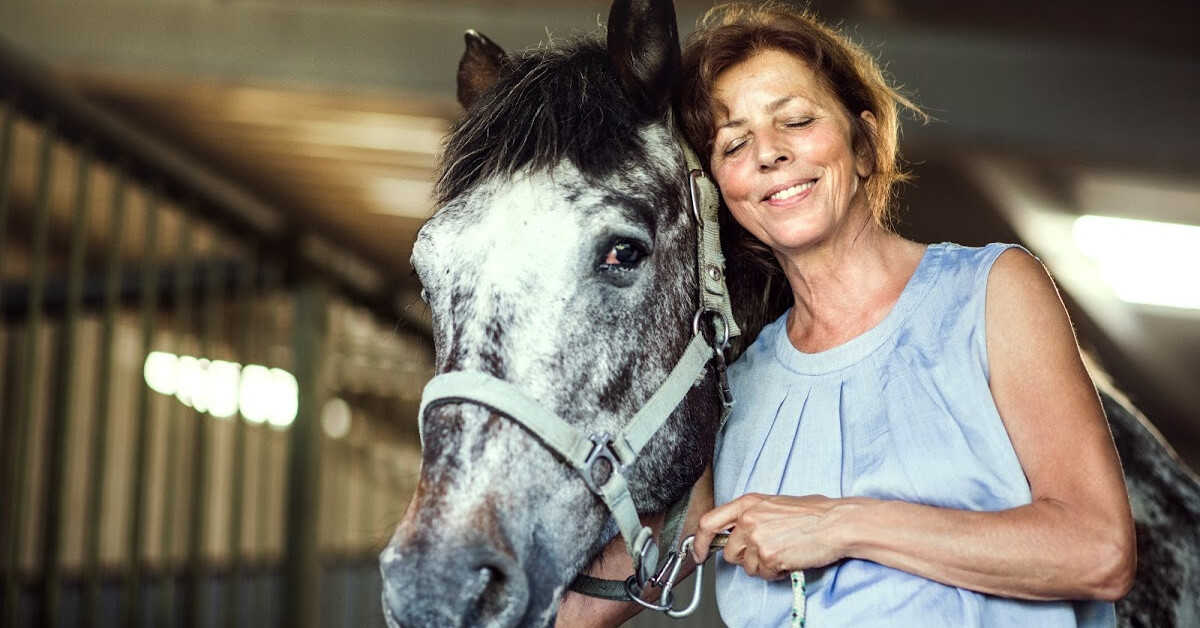“No hoof, no horse.”
This post is the second about horse hoof health. In the series of “no hoof, no horse,” you will see multiple reasons why daily hoof care and regular visits from a horse farrier visits are important.
Check out my first post that tells four steps to keep a horse’s hooves healthy. https://newtohorses.com/horse-hoof-problems-easily-avoided-with-these-four-valuable-steps/


A reputable and experienced horse farrier is vital to good horse hoof trimming
It is essential to have a reputable horse farrier with experience and knowledge of horse hoof health and biomechanics. They know how to properly trim a horse hoof, with or without shoes. Some do not have the experience and knowledge needed for more complex issues. Always verify that a farrier has had the proper training and internship to take care of particular horse hoof problems
A farrier can trim and shoe a horse’s hoof to encourage proper healing from a disease, illness, or injury and problems compromised by the horse’s irregular movement, conformation.
In addition, a farrier needs to understand how each hoof is affected by its lifestyle, whether it participates in a specific discipline, trails, or just being retired.
This is a link to a farrier school that tells how many hours and how much it costs. https://troypricehorseshoeingschool.com/horseshoeing-courses-horseshoeing-school/

Hoof shape problems can affect body alignment and confirmation
A horse can come from a safe and healthy lifestyle and still have issues, but the statistics will be lower. Some lifestyles will have more biomechanical problems to deal with than biological deficiencies.
A horse that has not had proper trimming and farrier care can have mechanical issues that affect its way of going (the way its body moves). The shape of their hoof influences how it carries its body.
The hoof that is not correctly trimmed can affect a horse’s alignment from his hip, shoulder, neck, to the back. They can come up sore in areas that don’t necessarily say that their hoof is improperly trimmed. And because the horse compensates for pain, the rider can have issues with their own position. All due to the improperly trimmed hoof.
“Appropriate trimming and/or shoeing combined with appropriate bodywork and riding remains the key to soundness.”
There is a remarkable body tolerance for asymmetry of most structures. Our job as horse owners, practitioners, veterinarians, farriers, and riders is to be able to recognize where asymmetric tolerance ceases and pathologic change and damage starts.
As explained by Dr. Ridgeway: The effects of a low heel/high heel syndrome has on the horse’s posture and performance. Appropriate trimming and/or shoeing combined with appropriate bodywork and riding remains the key to soundness.
Significant awareness has come from recognizing that the syndrome can grossly alter the shape of the shoulder and the back. Altering the posture and shape of the shoulder and wither area creates problems with saddle fit. The resulting posture of the horse affects not only saddle placement but also alters the rider’s posture and balance, and ultimately the rider’s soundness.
https://www.animal-mrt.com/blog/post/8301/Effect-of-hoof-distortion-on-Muscoskeletal-issues/

Having a good horse farrier that is knowledgeable in “good hoof form” can help prevent horse hoof problems in the future.
A horse owner and farrier needs to understand that a horse’s body can evolve in good and bad ways. As a horse matures from a baby, the hooves can compensate for confirmation deficiencies. Similarly, hoof structure can change very subtly, as the horse is conditioned and trained to each discipline their owner has chosen for them. And finally, any bodily injury can cause structural changes in their hooves due to the horse compensating in one way or the other to alleviate or lessen the pain they are feeling.
What is good hoof form and if your horse isn’t limping lame how can you know if the horses are sore?
The way horse chooses to stand Posture
If you have a sore foot yourself and you walk, and stand, always avoiding the sore area, after a time you will find you have secondary problems such as a sore back or sore hip.
Continue to adjust your posture for many years and eventually this will even lead to changes in areas as remote from your injury and because you will eventually carry your head tilted, to offset the tilted shoulder that is compensating for the tilted hip which is allowing you to take weight off your sore foot.
A list of problems will arise throughout your body. The same thing happens to horses who adjust their bodies to avoid years of heel pain.
https://www.animal-mrt.com/blog/post/8301/Effect-of-hoof-distortion-on-Muscoskeletal-issues/
A wide array of equine practitioners specialize in keeping horses healthy, happy, and successful in any discipline.
A horse owner, practitioner, veterinarian, and farrier work as a team to produce and maintain a healthy and comfortable horse. Farriers and practitioners are as crucial as Veterinarians. They all can work together to determine the best course of action for an injured horse or sore horse.
Although this might not be an exhaustive list, it gives an idea of how many opportunities are available to help a horse owner.
- Chiropractors
- Musculoskeletal care
- Osteopathy
- Saddle Fitters
- Acupuncture
- Acupressure
- Therapeutic Appliances
- Laser Therapy
- Kinesiology
- BioMechanics
- Equine Muscle Release Therapy
- Farrier
- Veterinarian
- Nutritionist
Always check their reputation and certifications before having someone work on your horse.
If you think about it, humans are the same way. If our feet hurt, we are stressed, or just tired, the way we carry our bodies is affected in many ways. My feet pronate out. I wear orthotics to compensate and keep my feet straight, which helps my hips and back stay straight. Horses are no different. Their hooves are an essential part of their body, as far as I am concerned. Without healthy horse hooves, there would be no horse.

